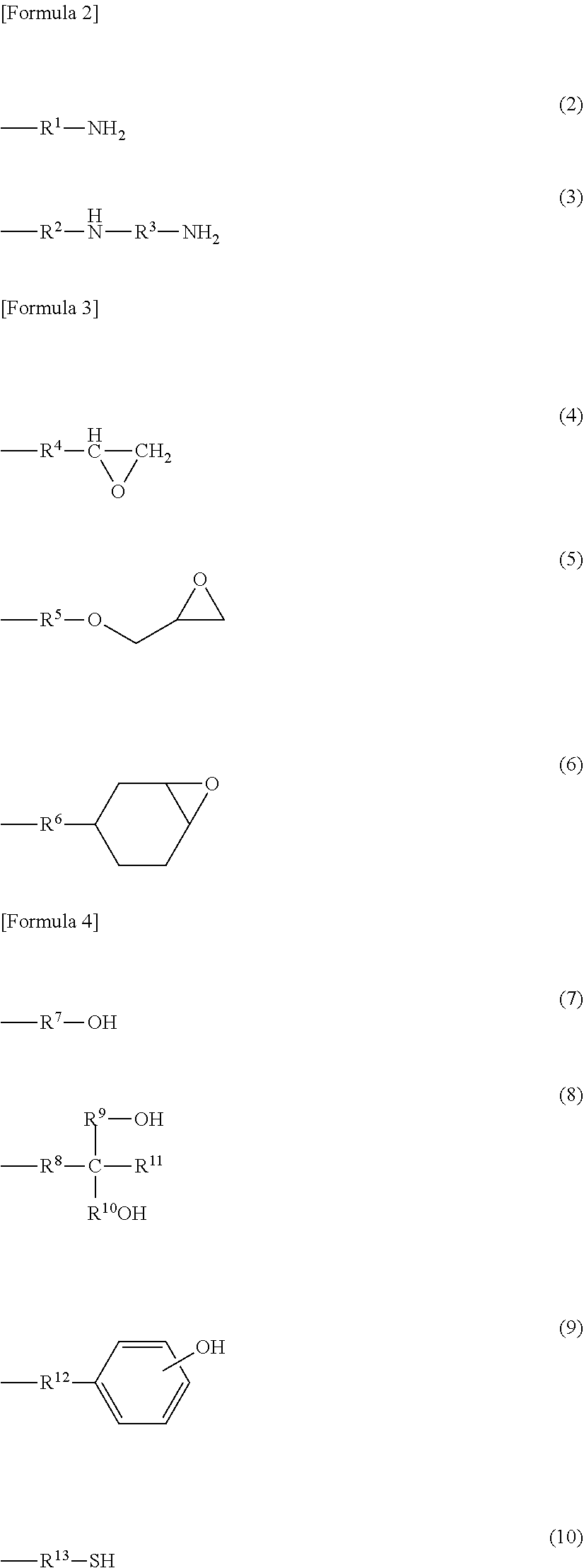Cellulose resin, molding material, molded body, and method for producing cellulose resin
a technology of cellulose resin and cellulose resin, which is applied in the field of cellulose resin, molding materials, molded bodies, and methods for producing cellulose resin, can solve the problems of high energy consumption, high production cost of cellulose resin, and complex and laborious chemical modification of cellulose into suitable molding resins, etc., and achieve excellent mechanical characteristics and thermoplasticity.
- Summary
- Abstract
- Description
- Claims
- Application Information
AI Technical Summary
Benefits of technology
Problems solved by technology
Method used
Image
Examples
example 1
[0166]After the activation treatment of cellulose (pulp), the cellulose (pulp) was acylated in a solid-liquid heterogeneous system to obtain a cellulose resin. Specifically, the cellulose resin (cellulose propionate stearate) was prepared according to the following.
[0167]Six grams (in terms of dry weight, 37 mmol / glucose unit) of Cellulose 1 (dissolving pulp powder, water content 6.4%, DP560) was put in a reactor and dispersed in 90 ml of pyridine in a nitrogen atmosphere, and stirred overnight at room temperature for activation.
[0168]Thereafter, the cellulose dispersion was cooled to 10° C. or less, and 7.85 g (26 mmol) of stearoyl chloride and 10.28 g (111 mmol) of propionyl chloride were mixed in advance and charged into the reactor while maintaining 10° C. or less.
[0169]After stirring with heating at 100° C. for 4 hours, the mixture was cooled to 50° C., 125 ml of methanol was added dropwise, and the mixture was stirred for about 30 minutes.
[0170]An additional 40 ml of water was...
example 2
[0190]A cellulose resin (cellulose propionate stearate) was obtained in accordance with the same quantities and method as in Example 1 except that the raw material was changed to cellulose 2 (dissolving pulp powder, water content 6.1%, DP460) (amount of product 13 3 g, yield 96%).
[0191]The obtained sample (cellulose propionate stearate) was measured by 1H-NMR in the same manner as in Example 1, and as a result, DSLo was 0.39 and DSSh was 2.09.
[0192]The sample was evaluated for impact strength and flowability in the same manner as in Example 1. The results are shown in Table 1.
example 3
[0193]A cellulose resin (cellulose propionate stearate) was prepared according to the following.
[0194]Six grams (in terms of dry weight, 37 mmol / glucose unit) of Cellulose 1 (dissolving pulp powder, water content 6.4%, DP560) was put in a reactor and dispersed in a mixture of 79 ml of N-methylpyrrolidone (NMP) and 11 ml of pyridine in a nitrogen-atmosphere, and stirred overnight at room temperature for activation.
[0195]Thereafter, the cellulose dispersion was cooled to 10° C. or less, and 5.60 g (18 mmol) of stearoyl chloride and 10.28 g (111 mmol) of propionyl chloride were mixed in advance and charged into the reactor while maintaining 10° C. or less.
[0196]After stirring with heating at 90° C. for 4 hours, the mixture was cooled to 50° C., 90 ml of methanol was added dropwise, and the mixture was stirred for about 30 minutes.
[0197]An additional 20 ml of water was added to precipitate the product, which was collected by suction filtration. The resulting solid was washed with 100 ml...
PUM
| Property | Measurement | Unit |
|---|---|---|
| impact strength | aaaaa | aaaaa |
| melt flow rate | aaaaa | aaaaa |
| molding | aaaaa | aaaaa |
Abstract
Description
Claims
Application Information
 Login to View More
Login to View More - R&D
- Intellectual Property
- Life Sciences
- Materials
- Tech Scout
- Unparalleled Data Quality
- Higher Quality Content
- 60% Fewer Hallucinations
Browse by: Latest US Patents, China's latest patents, Technical Efficacy Thesaurus, Application Domain, Technology Topic, Popular Technical Reports.
© 2025 PatSnap. All rights reserved.Legal|Privacy policy|Modern Slavery Act Transparency Statement|Sitemap|About US| Contact US: help@patsnap.com



